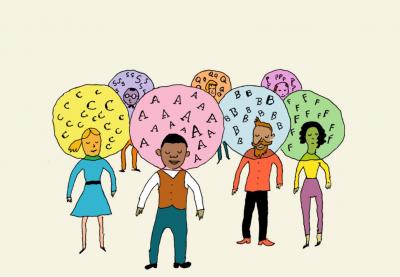Digital natives are coming of age, and their transition to adulthood has exposed a gap in our teaching: digital literacy. The ability to be fluent, savvy and safe online is vital for students if they are to become active, responsible participants in a diverse democracy.
Many educators have rushed to help their students tell the difference between “fake news” and fact, and this is important. But digital literacy goes far beyond fact-checking. It’s also a powerful tool for community building and civic engagement.
Students—tasked with protecting their personal information, managing their digital footprints and listening to multiple perspectives in an increasingly uncivil, divided online world—face a number of concerns that require digital skills and self-awareness.
The most tech-savvy educators may not realize the complexity of how digital media (and the limitations of the human brain) shape our abilities to critically evaluate online information. Learning the Landscape of Digital Literacy, the publication that accompanies the Digital Literacy Framework, provides this context—a 101 on the obstacles separating us from a safe, civil and informed online experience.
Today, Teaching Tolerance presents a digital literacy initiative designed to offer front-end solutions to these challenges. The initiative is based on a framework that identifies competencies students need to be both responsible consumers and producers of online content.
The Framework
- Students can locate and verify reliable sources of information.
- Students should understand how digital information comes to them.
- Students can constructively engage in digital communities.
- Students should understand how online communication affects privacy and security.
- Students should understand they are not just consumers of information—but also producers.
- Students should understand their role as customers in an online marketplace.
- Students can evaluate the value of the internet as a mechanism of civic action.
View the full version of the framework—which includes student outcomes—here.
Taken together, these competencies form the basis of digital literacy, building on the best practices of media literacy while considering the specific challenges presented by the internet and new media.
This initiative also provides ready-made K–12 lessons that teach these concepts deeply and give teachers the context necessary to implement them effectively. The lessons are free and don’t require internet access—either in the classroom or in students’ homes—making them adaptable to any classroom environment.
Along with these lessons, the initiative will provide short informational videos (see the first one here!) and self-guided professional development tools to help educators prepare themselves to tackle the topic in depth. These tools include vocabulary lists, handouts, checklists and more.
The landscape of digital media will continue to evolve, so we will adapt these lessons as needed. We invite educators to provide us feedback on our materials: What do you find most and least effective? Are there any gaps in the framework?
It is our sincere hope that these lessons and materials help you easily integrate digital literacy into your classroom and prepare students to participate in our diverse democracy. Let’s equip our students with the tools necessary to steer their own ships as they navigate the online world.
